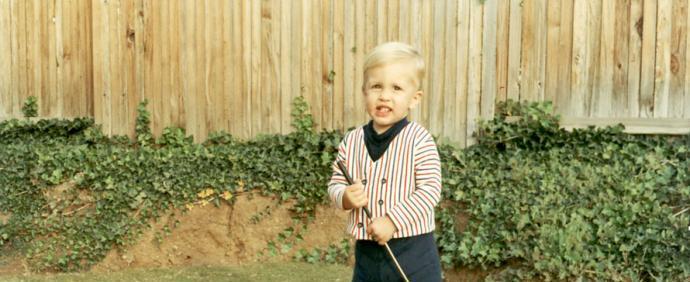
How They Got Started In Golf
We see Tiger Woods producing miraculous shots, Phil Mickelson unveiling Michelangelo-like touch around the greens, Bubba Watson snap-hooking wedges 30-yards off pine-straw covered tight lies, and we wonder, how did they get so good?
They’re good because they developed a love for the game young. The stories are iconic.
There’s the one by Lawrence Donegan of the London Observer about golf’s recently-renamed No. 1 player. “Tiger Woods sat in his high chair, age six months, watching his father hitting golf balls into a practice net hung from the ceiling.” At 10 months, Donegan says, Tiger picked up a “tiny putter, teed up a ball and smacked it, left-handed, into the net.”

Tiger Woods learned to enjoy the game of golf with his dad at an early age. Photo by Golf Digest.
At age 3, Phil Mickelson ran away from home to be with his father on the golf course. As for Bubba Watson – who more than anyone exemplifies today’s top pro as someone with a preternatural, almost freakish understanding of body-club-ball relationship – he learned the game by bashing a wiffle ball with a cut down nine-iron around his home in Bagdad, Florida.
The common thread between them all is that they developed an almost all-consuming passion for the game early on. That alone can be intimidating. But it’s important to remember that not every pro golfer came out of the womb with perfect form.
Forty-five years ago, then 24-year-old Larry Nelson returned from a tour in Vietnam and took up golf. With time on his hands, a willingness to work and the simple guidance provided by a copy of Ben Hogan’s Five Lessons: The Modern Fundamentals of Golf, Nelson went on to the PGA Tour and became a 10-time winner. He is still known as one of golf’s steeliest competitors.

24-year-old Larry Nelson returned from a tour in Vietnam and took up golf, later becoming a 10-time PGA Tour winner. Photo by Golf.com.
Stories still are told in western New York about a 20-something pro in the 1970s with a crooked left arm who outplayed the local hotshots. Turns out it was Calvin Peete, who took up the game in his mid-20s and overcame the fact that a broken left arm in his youth, which was not set properly, could in fact be a positive (he was short in driving distance but deadly accurate).
With 12 wins, Peete was arguably the most successful African-American on the PGA Tour before the emergence of Tiger Woods.
Peete’s a perfect example that getting youths into the game doesn’t have to start when they’re in diapers. But success in such a difficult, demanding game requires dedication and athletic ability, to be sure.
The difference is letting the desire manifest itself naturally. A good example is Rickie Fowler, who chased Tiger for the Arnold Palmer Championship title last weekend, taking 2nd place. He was raised in Murrieta, Calif., north of San Diego, was “self-taught” and played most of his golf on a driving range, but also enjoyed (and still enjoys) other activities like riding motocross bikes and surfing. He had a strong junior golf career, a scholarship ride to Oklahoma State and, now, pro-career success and cultural stardom, probably because he had a good balance between work and fun.

PGA Tour sensation Rickie Fowler is a great example of a successful player who balances work with fun. Photo by Golf Digest.
Getting young or not-so-young kids into the game is all that matters. Golf has its unique elements whose appeal can take time. Forcing it doesn’t help, but in many cases the chance to play at age 8 or 10 or 12 followed by a long absence is no cause for worry. They can always come back to golf later in life, and perhaps that’s the game’s best selling point.
We can play for the rest of our lives. And though we don’t hit 150-yard pitching wedges with 30-yard draws to the 10th green at Augusta National, a la Bubba Watson, we still can enjoy the game for as long as we can play.
Featured image of young Phil MIckelson courtesy of Golf.com.

Leave a Reply
You must be logged in to post a comment.